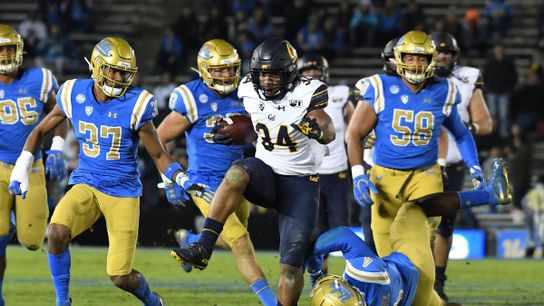By and large, college athletics directors, football coaches, as well as basketball and – perhaps the surest indicator of imminent change – industry pioneers such as INFLCR, OpenDorse all are making various preparations for the coming Name, Image and Likeness legislation in collegiate athletics.
The measures are going to create a veritable free-market economy for college athletes to begin earning direct payments off their individual brands, be it as a brand spokesperson in sponsored advertisements, with content on an athlete's social media platforms – Twitter, Instagram, YouTube among them.
Earlier this month, a new Federal bill was proposed to prevent any limitations on potential N.I.L. earnings for college athletes and also to preclude any institutional caps. Democratic senators Chris Murphy (Connecticut) and Lori Trahan (Massachusetts).
One key element of that proposal was that the senators included language that denied the NCAA the ability to restrict student-athletes from marketing and offering group rights.
The NCAA has on multiple occasions asked Congress for assistance in navigating this nebulous impending new world of athlete-endorsers, especially as so many athletics programs throughout the country drive revenues via exclusive marketing and apparel deals with brand-industry titans such as Adidas, Jordan Brand, Nike and Under Armour.
Now California democratic assemblywoman Sydney Kamlager has introduced a radically revamped N.I.L. proposal in her state, known officially as AB-609 College Athlete Race and Gender Equity Act.
In cutting through the Legislative Counsel's Digest on the bill, the primary emphasis of the proposal appears to be Kamlager's desire to see California institutions of higher learning “with sports programs in which 50% of the institution's total sports revenue in the state exceeds the total aggregate grant-in-aid athletics scholarship amount provided to the institution's college athletes in the sport to pay a name, image and likeness royalty to each qualifying athlete, as specified.”
The bill also directly proposes a cap on coaching salaries with a base-line range established not by the larger state schools but the ones who compete at the Football Championship Subdivision level.
"This bill would prohibit an institution of higher education that receives state funds or state tax-exempt status from compensating athletics administrative personnel in an amount that exceeds 50% of the average total intercollegiate athletics administrative personnel compensation expenses paid by institutions of higher education that belong to the Football Championship Subdivision of the National Collegiate Athletic Association."
The bill likewise is proposed with a clause to prevent any facilities enhancements or renovations that cannot be shown to be directly needed to improve the health and/or safety of student-athletes, per the proposal's language.
Additionally, the bill from Kamlager – who proposed among other bills earlier this month a pet insurance bill that requires policies to “cover spaying and neutering pets and any veterinary expenses associated with these services” – also would impose up to a three-year-ban on collegiate athletics directors in California whose programs are found out of Title IX compliance.
Last summer, when it appeared COVID-19 would prevent any fall collegiate sports seasons, most notably that of college football, multiple PAC-12 athletics directors revealed that the absence of football would crater athletics departments with revenue losses in the tens of millions; both USC A.D. Mike Bohn and Utah A.D. Mark Harlan pegged the projected losses at more than $50 million.
While Kamlager's bill may be designed to demand payment for California athletes whose collegiate programs are revenue-producing, it also fails to consider the funding those sports provide other, non-revenue-producing teams that help ensure the Title IX compliance that Kamlager notes in her bill, according to sources in the PAC-12.
“It's proposed by people who have absolutely zero idea how things operate,” said one person.
For example, the Stanford student newspaper, The Stanford Daily, noted six years ago that it cost the university $100 million to field its athletics teams, and quoted the school's athlete-handbook as revealing “approximately one-third (of funding) comes from ticket-sales and television revenue.”
More recently, per Forbes, Stanford football generated approximately $44 million of the school's $139 million in revenue for 2018-19 campaign. Last summer, amidst the coronavirus pandemic, Stanford announced it was whacking 11 varsity sports programs from its department at the conclusion of the current 2020-21 academic calendar.
Stanford school leaders said the cuts were mandated in direct response to the lost revenues of the previously terminated winter and spring sports of a year ago, the expected lost revenues of fall sports and general belt-tightening amidst financially difficult times.
Though the PAC-12 eventually played a truncated football season in the fall, its teams played – at most – six regular-season games. Its conference championship was dramatically impacted due to Washington's inability to play in adherence to COVID-19 protocols; Oregon took the Huskies' place.
Additionally, five PAC-12 teams – Arizona State, California, Colorado, Washington and Washington State – played only four regular-season games apiece due to cancellations that stemmed from coronavirus concerns.
A typical PAC-12 football season includes 12 games, usually with at least six or seven of those games in a team's home stadium. Ticket sales and concession revenues also were a nonfactor across the league's shortened season, which featured the fewest contests of any Power 5 conference.
The full text of the proposed bill is here.
